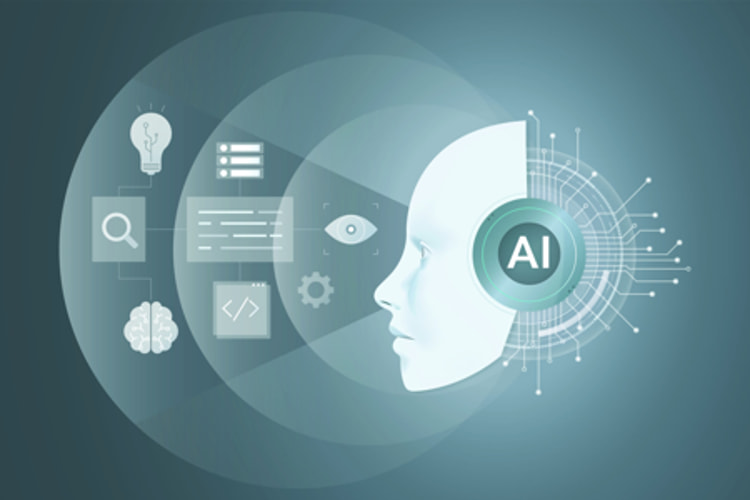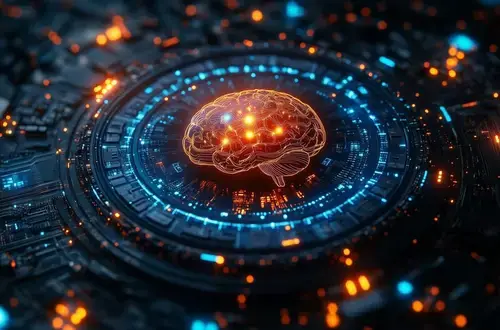Artificial Intelligence is evolving faster than ever — and at the core of this revolution lie Large Language Models (LLMs). But not all LLMs are created equal.
From reasoning engines to multimodal systems, today’s AI agents are powered by different types of LLMs designed for specific purposes. In this article, we’ll explore 8 key types of LLMs used in AI Agents, their architectures, advantages, and real-world applications.
1. GPT – Generative Pretrained Transformer
GPT models are the foundation of most AI systems today. Built using the Transformer architecture, GPTs learn by predicting the next token in a text sequence, enabling them to generate human-like language.
Key Features
-
Pretrained on massive datasets in an unsupervised fashion
-
Fine-tuned with Reinforcement Learning from Human Feedback (RLHF)
-
Autoregressive in nature — predicts one token at a time
-
Scales efficiently with more parameters and data
Use Cases
-
Chatbots and conversational AI
-
Text summarization and content generation
-
Code completion and translation
Examples: GPT-4, Gemini, Claude 3, LLaMA 3
Pros and Cons
- Excellent reasoning and generalization
- Expensive training and limited context length
2. MoE – Mixture of Experts
The Mixture of Experts (MoE) architecture divides a large model into smaller specialized sub-models known as experts. A router dynamically selects which experts process each input, making the model efficient and scalable.
Key Features
-
Routing network determines active experts
-
Only a subset of the model processes each input
-
Enables scaling without proportional computational cost
Examples: Switch Transformer, GShard, Mixtral
Advantages
-
Reduces compute cost by activating fewer parameters
-
Allows domain-specific learning
-
Scales easily by adding more experts
Limitations
-
Complex routing logic
-
Possible imbalance between experts’ workloads
3. LRM – Large Reasoning Model
Large Reasoning Models (LRMs) are designed for multi-step reasoning — going beyond text prediction to logical, mathematical, or analytical thinking.
Architecture Highlights
-
Integrates chain-of-thought reasoning
-
Often includes retrieval-augmented generation (RAG)
-
Can use tools, calculators, or APIs for extended reasoning
Examples: OpenAI o1, Anthropic Claude 3.5 Reasoning, DeepMind AlphaCode
Advantages
-
Excels at complex reasoning, math, and planning tasks
-
Integrates symbolic and logical processing
Limitations
-
Computationally heavier
-
Needs alignment to avoid hallucinations
4. VLM – Vision-Language Model

Vision-Language Models (VLMs) combine text and visual understanding — the foundation of multimodal AI. These models can “see” and “read,” enabling richer comprehension of the world.
Architecture
-
Vision encoder (e.g., ViT or CLIP) extracts image features
-
Language decoder (e.g., LLM) processes textual input
-
Fusion layers align visual and textual embeddings
Examples: GPT-4o, Gemini, Qwen-VL, Flamingo
Applications
-
Image captioning
-
Visual question answering (VQA)
-
Scene analysis and robotics
Challenges
-
Limited spatial understanding
-
Expensive visual pretraining
5. SLM – Small Language Model
Small Language Models (SLMs) are compact versions of LLMs optimized for speed, efficiency, and on-device AI. They bring intelligence to mobile and edge devices without needing massive infrastructure.
Examples
LLaMA 3-8B, Mistral 7B, Phi-3, Gemma, TinyLlama
Advantages
-
Fast inference and low cost
-
Ideal for local deployment and privacy-sensitive applications
Limitations
-
Limited reasoning ability
-
Smaller vocabulary and shorter context window
6. LAM – Large Action Model
Large Action Model

s (LAMs) extend LLMs beyond text — enabling them to take actions such as executing code, controlling software, or interacting with APIs. They are at the heart of AI agents that “do,” not just “say.”
Architecture
-
Combines reasoning, planning, and execution modules
-
Connects with external APIs or tools
-
Often integrates a planner-executor framework
Examples: GPT-4 Agents, Adept Fuyu, Toolformer
Applications
-
Workflow automation
-
Software control and robotic systems
-
AI copilots and task automation
Limitations
-
Risk of unintended actions
-
Requires strict safety and permission control
7. HLM – Hierarchical Language Model
Hierarchical Language Models (HLMs) use a multi-level structure where high-level models plan and low-level models execute. This setup mirrors human cognition, allowing complex task decomposition.
Architecture
-
High-level LLM: Sets overall goals and strategies
-
Low-level LLMs: Handle subtasks and specific domains
-
Communication occurs through structured prompts or memory layers
Examples: AutoGPT, Voyager, CAMEL
Advantages
-
Efficient task management
-
Better modularity and scalability
Limitations
-
Difficult coordination between layers
-
Complex to fine-tune and debug
8. LCM – Large Concept Model
The Large Concept Model (LCM) represents a new frontier — focusing on conceptual understanding rather than word prediction. LCMs build semantic and conceptual networks that model the relationships between ideas.
Architecture
-
Concept encoder: Transforms text into abstract concept embeddings
-
Concept decoder: Converts concepts back into text or visual form
Examples: ConceptNet-inspired models, research-grade conceptual AIs
Applications
-
Knowledge graph generation
-
Semantic search and explainable AI
-
Educational and reasoning systems
Limitations
-
Concept learning is complex and data-intensive
-
Still an emerging research area
Summary Table
| Type | Full Form | Core Purpose | Example |
|---|---|---|---|
| GPT | Generative Pretrained Transformer | Text and reasoning | GPT-4, LLaMA |
| MoE | Mixture of Experts | Scalable specialization | Mixtral, GShard |
| LRM | Large Reasoning Model | Deep reasoning and logic | o1, AlphaCode |
| VLM | Vision-Language Model | Image + text understanding | GPT-4o, Gemini |
| SLM | Small Language Model | Lightweight edge AI | Phi-3, Gemma |
| LAM | Large Action Model | AI agents with tool use | GPT Agents, Fuyu |
| HLM | Hierarchical Language Model | Multi-level task decomposition | AutoGPT, Voyager |
| LCM | Large Concept Model | Conceptual understanding | ConceptNet-like models |
Conclusion
AI agents are rapidly evolving from text-only assistants to multimodal, action-driven, reasoning-based systems. The diversity of LLM architectures — from GPTs to LCMs — shows how the field is shifting from mere language prediction to cognitive intelligence.
Each model type contributes to a broader goal: building AI systems that think, see, act, and understand like humans.




